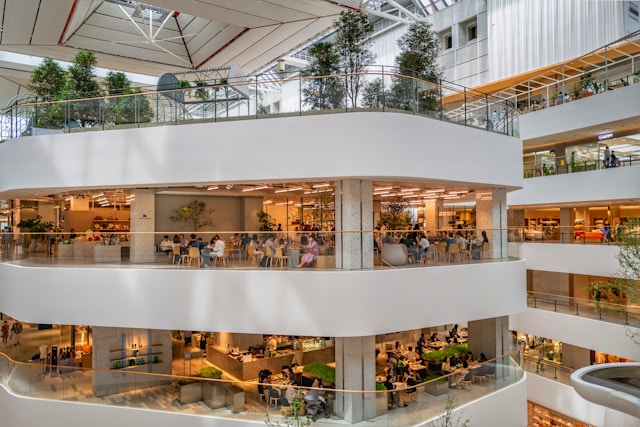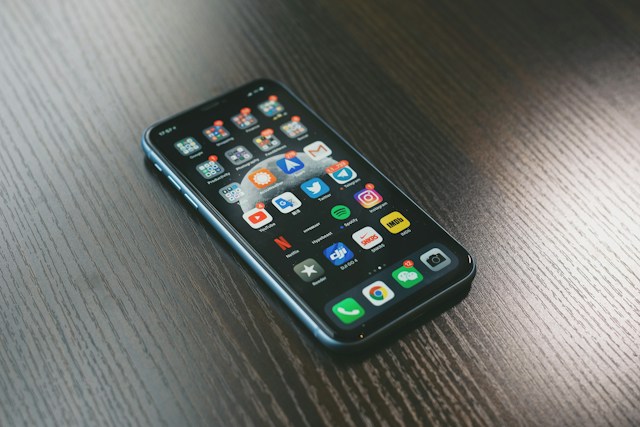The proliferation of smartphones has made navigation much easier. Technological advancements now allow you to easily locate everything from a tiny store to a large transportation hub and even virtual explore these facilities from the inside and out.
While this is immensely helpful, users rightly want to be able to navigate inside a facility once they’re actually there. Indoor navigation solutions help you do just that. With them, you can quickly locate your destination within a large building and explore other points of interest. Here’s a quick breakdown of what goes into building an indoor navigation solution and how to implement it.
Why Is Indoor Navigation Necessary?
Most smartphones today come equipped with Global Positioning System (GPS) or other satellite navigation facilities. However, while GPS is great for navigating outdoors, it often fails to perform indoors. Phones tend to lose their GPS signal in areas like elevators, underground lots, and crowded cafes.
This is where indoor navigation comes in. It helps you determine and locate points of interest inside large buildings and complexes and it doesn’t depend on traditional satellite technology to work. It’s often a necessary feature for places like airports, shopping malls, business centers, hospitals, colleges, indoor markets, and more.
It can help visitors quickly locate everything from the right train terminal to the appropriate hospital ward and correct office without having to waste time and energy. By simply entering the name of a shop or destination, the user can locate it within the facility and map out the quickest route to it.
All of this improves the user experience for the visitors and makes it more likely that they use the facility again. It’s a big plus for business owners as well as potential customers can quickly make their way to them.
Finally, indoor navigation solutions also offer enterprises detailed analytics. The platforms can record a host of metrics, including the number and frequency of visits, wait time, traffic hotspots, and more. Using this data, facility managers can observe in real-time if certain areas or routes are congested and take action to open up alternate routes and relieve the overcrowding.

How to Build and Implement an Indoor Navigation Feature
There are a few options when it comes to choosing the technology for your indoor positioning solution (IPS). Broadly speaking, you need three things to implement indoor navigation:
Destination Facility Map
To begin with, there has to be an accurate map of the facility available. This includes floor plans, architectural drawings, and other relevant information that can be digitized into a suitable interface. This map provides the structure for all that is to follow.
Choosing the right map provider is critical. It is essential that your partner be able to demonstrate accuracy across its map solutions and that you’re able to build a reliable feature that users can count on when they’re pressed for time.
Smartphone With IPS App Installed
You need a smartphone app with a suitable interface that users can interact with to leverage the location data you’re providing. The app defines the user experience for the visitor and can often make or break your solution’s utility.
Users should be able to quickly explore, find, and select relevant destinations and establish the shortest possible route to their selection. Ensure your app is entirely responsive and that users don’t have to spend too much time in the menus to find what they need.
Indoor Location Technology
Indoor navigation doesn’t rely on GPS, but it does need to rely on something to enable devices to showcase the accurate indoor location. You have a few different options here:
- Bluetooth Low Energy: BLE operates via locator beacons that are installed throughout the premises. They rely on your smartphone’s Bluetooth feature to establish relative location based on distance from various beacons and offer reasonable accuracy (of up to 16 feet on average). BLE beacons also consume very little power and their batteries tend to last for years. They’re quite easy to implement and a very popular choice for indoor navigation.
- WiFi: WiFi is perhaps the most affordable option, since it relies on existing WiFi points that most facilities are likely to have throughout their premises. These WiFi points become signal transmitters that emit pulses the smartphone can latch on to. The downside is that WiFi points don’t transmit the location itself. That has to be determined by the smartphone, which quickly drains its battery.
- Augmented Reality: There are at least a couple of options powered by augmented reality (AR) you can leverage. Some solutions work by visually scanning surrounding outlets or points of interest and using that to determine a user’s location in the building. However, this can often be inaccurate as lots of different shops may look alike.
Another option is to use AR visual markers. You can place AR markers at regular intervals throughout the premises with their exact location stored in the cloud. Users can scan these markers to establish their location in the facility. This technology is very accurate up to several millimeters.
Ultimately, which technology you deploy depends on the kind of facility or space you want to showcase. Shopping malls, which can often have several outlets within a relatively small area, require much more accuracy as compared to something like a sports complex. What’s not in doubt is that users are increasingly considering this feature a norm. Well-designed indoor navigation can significantly improve visitor experience at any sizable building or location and ensure repeat visits.






